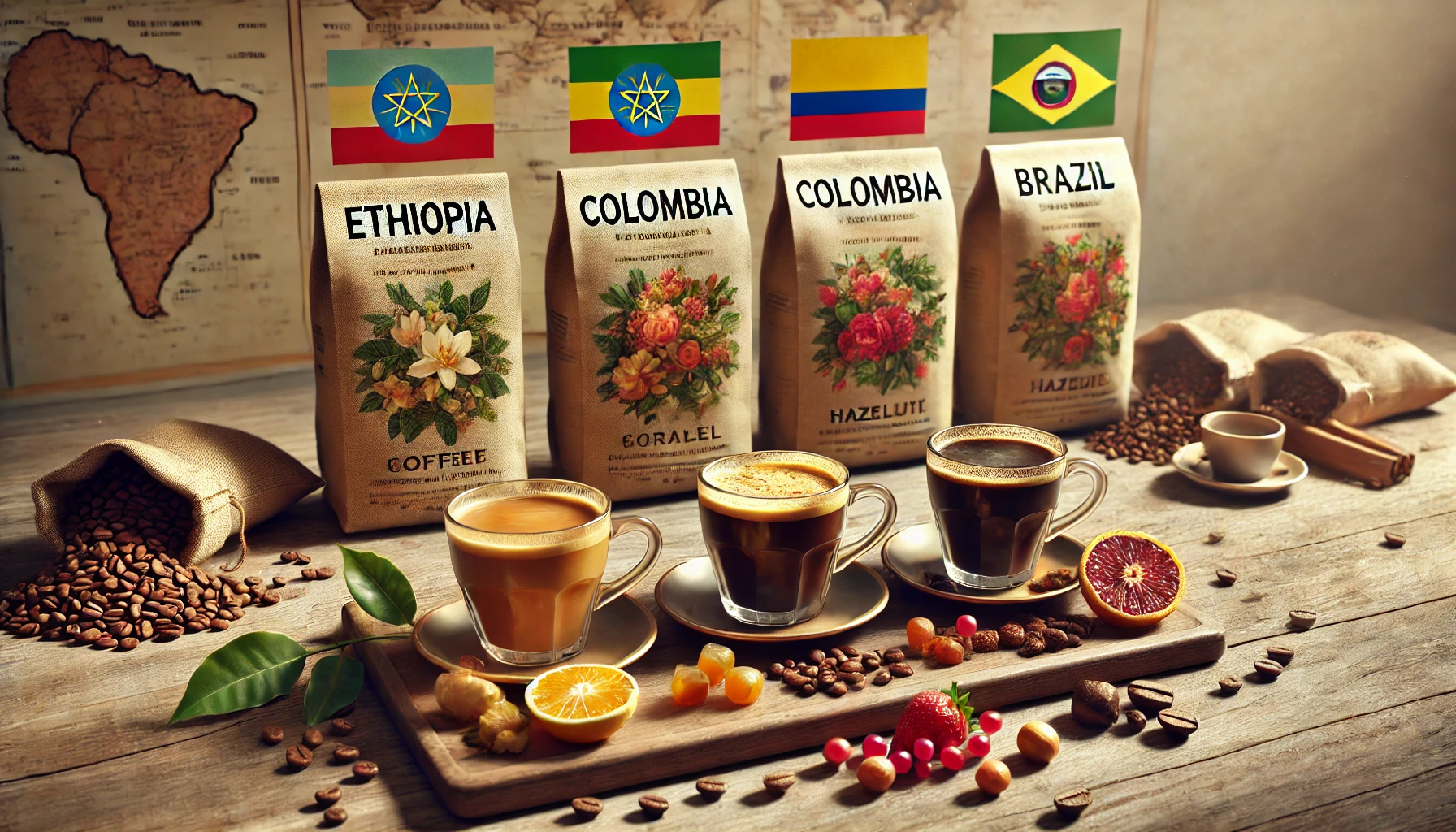Ethiopia, Colombia, and Brazil are three of the most iconic names in the coffee world — each with its own deep-rooted traditions, unique growing conditions, and distinct flavor profiles. Whether you’re new to specialty coffee or a seasoned aficionado, understanding the differences between these origins can help you appreciate your brew on a whole new level.
Let’s explore how the geography, processing, and culture of these three coffee giants shape the flavors in your cup.
Ethiopia: The Birthplace of Coffee
Ethiopia is widely considered the origin of Arabica coffee. Its wild coffee forests are home to thousands of coffee varieties, many of which are still undiscovered or unnamed.
Growing Conditions
- High elevations (1,500–2,200m)
- Fertile soil and ideal climate
- Mostly heirloom varieties grown organically
- Smallholder farms using traditional methods
Flavor Profile
- Fruity and floral
- Notes of blueberry, jasmine, bergamot, peach
- High acidity and delicate body
Processing Methods
- Natural (dry) process: enhances fruitiness and body
- Washed (wet) process: delivers cleaner, tea-like flavors
Ideal For
- Pour-over and manual brewing
- Those who love complex, vibrant coffee
Ethiopian coffees are often described as exotic and aromatic, perfect for exploring the lighter, more nuanced side of coffee.
Colombia: Balance and Sweetness
Colombia is famous for producing well-balanced coffees with consistent quality. Thanks to its geography and climate diversity, Colombian coffee offers a wide range of profiles while maintaining a signature smoothness.
Growing Conditions
- Elevations from 1,200 to 2,000m
- Mountainous terrain and rich volcanic soil
- Two annual harvests in many regions
Flavor Profile
- Sweet and balanced
- Notes of caramel, red berries, chocolate, citrus
- Medium to high acidity, medium body
Processing Methods
- Mostly washed process
- Some producers experimenting with honey and natural processes
Ideal For
- French press, drip, pour-over, espresso
- Drinkers who enjoy versatile, everyday coffee
Colombian coffee is the go-to choice for smooth, drinkable cups that can still offer fruitiness and brightness depending on the region.
Brazil: Nutty and Chocolatey Comfort
As the world’s largest coffee producer, Brazil supplies everything from commercial blends to high-end micro-lots. Its vast landscape supports both large estates and small farms, making it incredibly diverse — but most Brazilian coffee is known for its comforting, low-acid profile.
Growing Conditions
- Mostly low to medium altitudes (800–1,300m)
- Dry climate ideal for natural processing
- Mechanized harvesting in many regions
Flavor Profile
- Nutty, chocolatey, smooth
- Notes of hazelnut, cocoa, brown sugar
- Low to medium acidity, full body
Processing Methods
- Natural (dry) process dominates
- Also uses pulped natural (semi-washed)
Ideal For
- Espresso, cold brew, milk-based drinks
- Anyone who loves bold, rich, smooth coffee
Brazilian coffees are dependable and comforting — think of them as the “chocolate bar” of the coffee world.
Side-by-Side Flavor Comparison
| Feature | Ethiopia | Colombia | Brazil |
|---|---|---|---|
| Typical Elevation | 1,500–2,200m | 1,200–2,000m | 800–1,300m |
| Acidity | High | Medium to high | Low to medium |
| Body | Light to medium | Medium | Medium to full |
| Common Notes | Blueberry, jasmine, citrus | Caramel, red berries, chocolate | Hazelnut, cocoa, brown sugar |
| Process Style | Washed, natural | Mostly washed | Natural, pulped natural |
| Best For | Pour-over, manual brew | Any brew method | Espresso, milk drinks |
| Specialty Appeal | Exotic, floral, fruity | Balanced, versatile | Smooth, chocolatey, bold |
Which One Should You Try?
It depends on what you enjoy:
- Choose Ethiopian coffee if you love tea-like body, floral aroma, and fruity brightness
- Go for Colombian coffee if you want sweetness, balance, and wide versatility
- Pick Brazilian coffee if you prefer bold, rich, low-acid cups that pair well with milk
If you love exploring, try all three! Taste them side by side to experience how origin alone can transform a cup of coffee.
Final Sip: One Bean, Three Worlds
Ethiopia, Colombia, and Brazil may all grow Arabica beans, but each origin offers a completely different journey in the cup. Their differences are shaped by nature, tradition, and passion — and together, they form the foundation of global coffee culture.
So the next time you’re buying beans, take a closer look at the origin. It might just lead you to your new favorite coffee.

